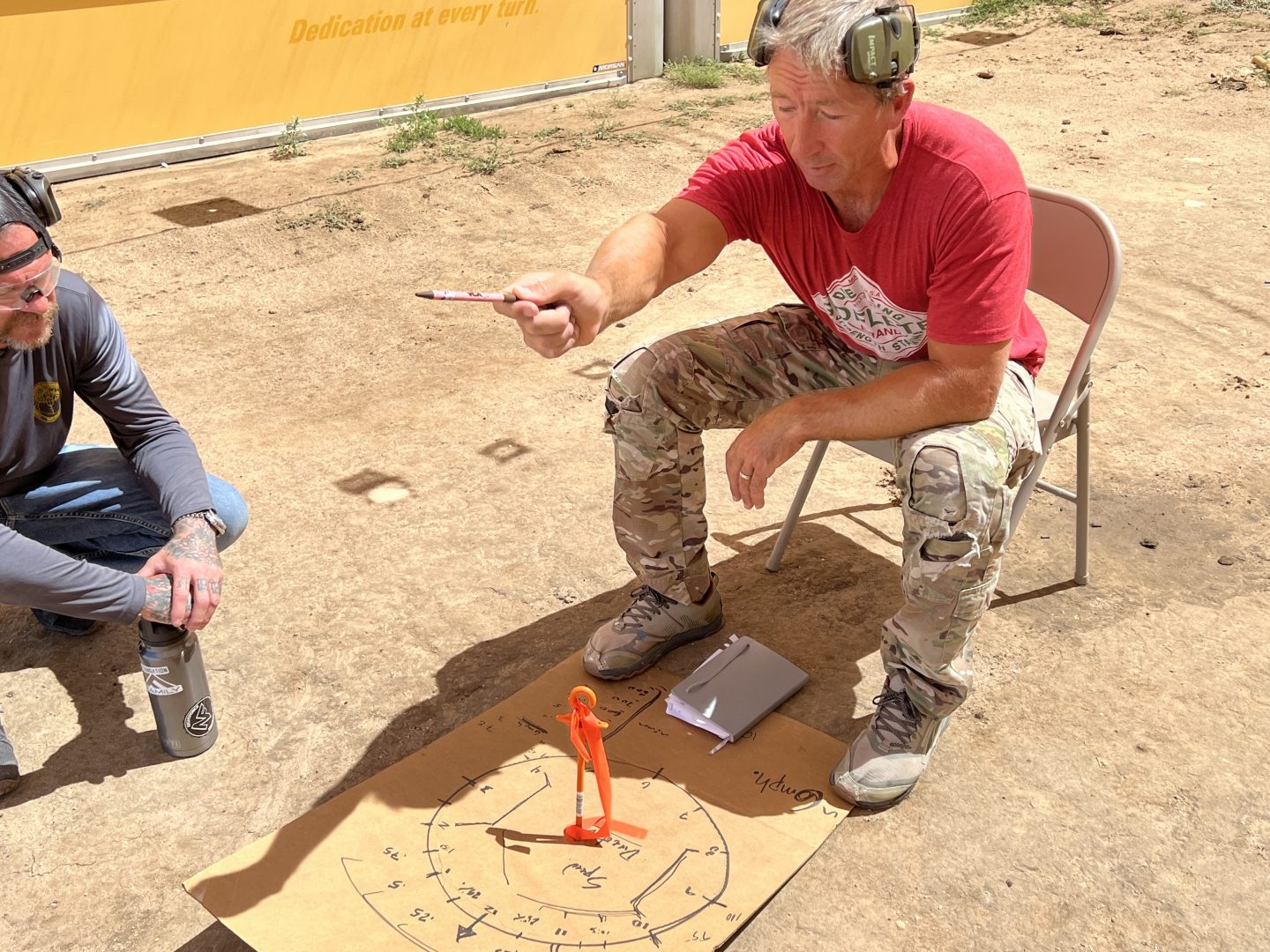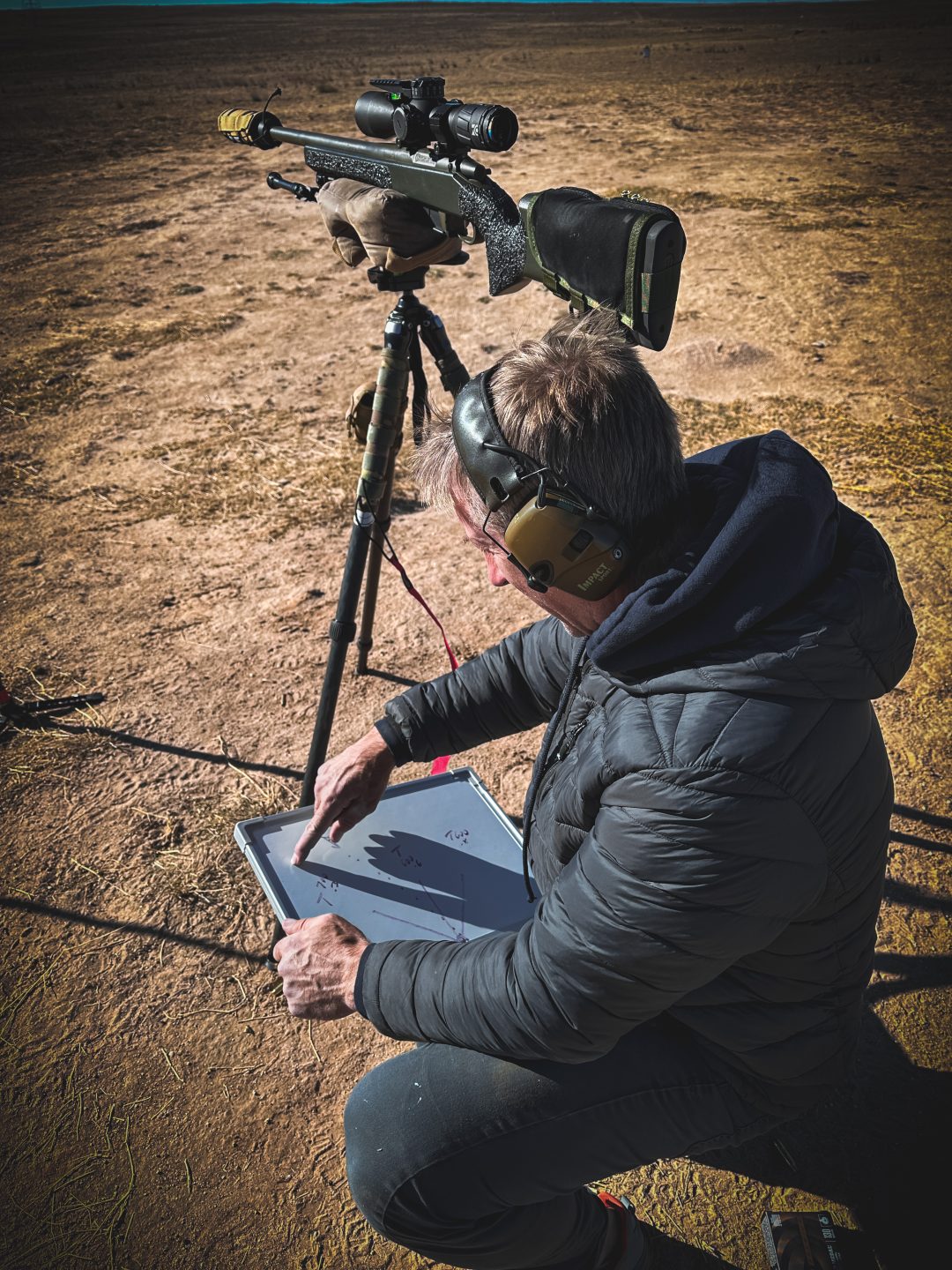Dissecting the Wind
In the realm of long-range shooting, mastering the art of wind reading is the key to increasing hit percentage. While determining range has become more accessible through the advancement of technology capable of providing a detailed range with lasers, wind remains the low-hanging fruit of uncertainty. The uncertainty of wind significantly influences the trajectory and impact accuracy of a bullet, and understanding its effects is crucial for marksmen seeking to maintain their accuracy and precision at a distance.
General considerations:
- Effect on Bullet Path: The wind has a predictable influence on a bullet’s trajectory. As the bullet moves downrange, the influence becomes more pronounced, with longer distances amplifying the effect. With wind the bullets impact moves down wind from a no wind point of aim.
Utilizing Charts and Formulas:

Marksmen often rely on various tools such as wind roses, mph charts, sin/cos values, calculators, and wind formulas to gauge wind values on their bullet/rifle system. These tools are very helpful for making informed adjustments.
Rules of Thumb: Seasoned shooters employ rules of thumb related to vegetation, mirage angles, and terrain effects to refine their wind calls.
Yet, Chart, Formulas, Rules of thumb rely on something that isn’t discussed as often but build a base for those techniques and tools. That is the gathering of the best input data.

Two Key Variables play into getting the best information out of your systems and they are:
Speed and Direction
- Speed:
- Importance: Knowledge of wind speed is paramount. It can be either specific, representing the full value speed, or general, considering the effective speed on the bullet by factoring in the direction its coming at the bullet from.
- Tech Limitations: While technology provides speed and detail, its reliability hinges on accurate inputs. Precision requires meticulous attention to obtaining the best possible data.
- Direction:
- Significance: The angle at which the wind interacts with the bullet’s flight path determines its impact. Described in angles, clock values, or effective speed, the wind direction is a critical factor.
- Determining Direction: Accurate wind direction readings are essential. A minor miscalculation can result in significant errors in wind calls.
Importance of Speed and Direction Together:
Understanding why speed and direction are crucial when combined underscores the significance of investing extra time in obtaining accurate inputs before taking the shot. The synergy of these two variables influences the bullet’s trajectory and ultimately the accuracy of the shot.
What I like to do is add some hands on activities to see where. Youre at and if a technique might be worth while adding to your repertoire of techniques. So try this:
To test your velocity and direction skills, consider the following drill:
- Take a wind reading as you normally would for a distant target and note the solution.
THEN
- Find mirage boil with binoculars or a spotting scope. If you don’t have either then use your riflescope to get them, being mindful of where youre pointing your rifle, and mark the ground with those lines.
- Additionally If you have a kestrel, turn the Kestrel sideways until the blade stops, marking the ground again in a line that is as close to the seam on the device as possible.
- Draw a line to the dirt below with a brass piece or stick to mark the directions you see the boil and the impellor test as well as a line towards the target.
- Create a clock with the lines you’ve drawn with the target as 12:00. Where the lines intersect calculate the time or the angle in degrees.
- Calculate the effective speed on the bullet using the obtained data and the appropriate sin value of the angle and compare the results.
Which was closer your original estimation and technique or the boil or kestrel test?
If you don’t know, shoot a target and compare hit percentage with the techniques.
Hopefully this helped in some way to reinforce the importance of gathering the best information possible from which to use or pull informed decisions from your toolkit with.

In the pursuit of excellence in marksmanship, continuously refining wind reading skills is paramount. While technology provides valuable tools, its efficacy depends on the accuracy of inputs. Testing and improving methods through practical exercises contribute to your ability to make precise wind calls. By consistently questioning, understanding, and growing, you can enhance your performance and achieve greater accuracy and hit percentages on targets at a distance.
See you at the range!

